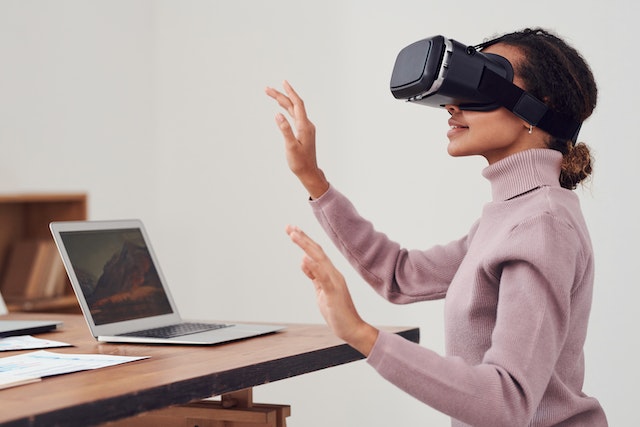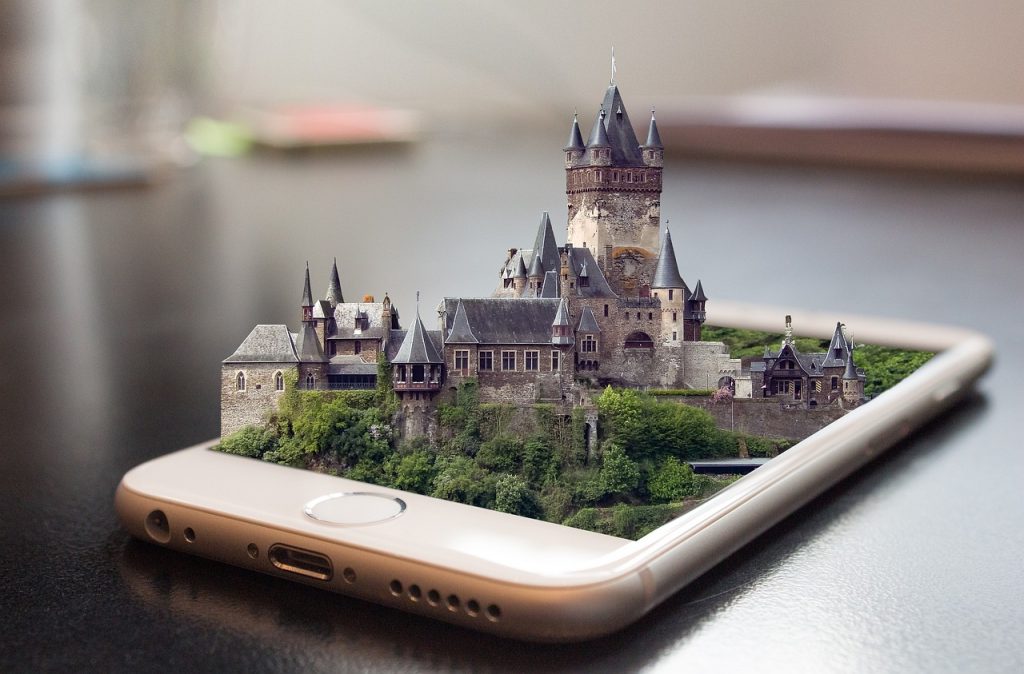
GUEST POST from Chateau G Pato
In a time where technology evolves at a dizzying pace, entertainment continues to stand at the forefront of innovation. Two extraordinary prowess — Virtual Reality (VR) and Augmented Reality (AR) — now vanguard the transformation of our digital experiences. These technologies transcend traditional screens, plunging us into immersive worlds and layering digital elements onto our physical reality. This article will explore how VR and AR are reshaping the entertainment landscape, supported by two profound case studies.
Entering New Realms: The Evolution and Potential of VR and AR
Virtual Reality, with its fully immersive simulations, is revolutionizing how we experience stories, games, and even social interactions. Augmented Reality, on the other hand, enhances our real-world environment with digital overlays, creating a hybrid experience that feels both tangible and futuristic. Together, VR and AR are setting new milestones across various entertainment segments — from movies to concerts, theme parks to gaming, and beyond.
Let’s delve into two captivating case studies that demonstrate the unmatched potential of VR and AR in entertainment.
Case Study 1: The Walt Disney Company’s Immersive Theme Park Experiences
When it comes to transforming the ordinary into the extraordinary, few do it better than The Walt Disney Company. Disney has long been synonymous with magical experiences, and with the incorporation of VR and AR, they’re leveling up their enchantment.
Disney’s Imagineering team, the creative force behind their theme parks, has employed AR to amplify visitor interaction and engagement. Their debut AR app, “Play Disney Parks,” layers interactive games, trivia, and stories onto the park sights. Visitors can scan select attractions with their smartphones and unveil hidden characters, playing mini-games that celebrate Disney’s rich heritage.
In the VR landscape, Disney introduced the “Ralph Breaks VR” experience at their parks, in collaboration with The Void. This adventure places park-goers into the game-like world of Ralph and Vanellope von Schweetz. Donning VR headsets and haptic vests, participants embark on a multi-sensory journey — battling evil algorithms and racing through immersive environments, feeling every hit and bump adding a tangible thrill.
By integrating VR and AR, Disney is creating new layers of storytelling and interactivity, making park visits a continually evolving and deeply engaging experience.
Case Study 2: Niantic’s Pokémon GO: A Global Phenomenon
Few applications have demonstrated the global impact and mass adoption potential of AR like Pokémon GO, developed by Niantic, Inc. Re-imagining a beloved franchise in a modern framework, Pokémon GO became a cultural phenomenon upon its release in July 2016.
This AR-based game uses the player’s smartphone GPS to locate, capture, battle, and train virtual creatures, which appear as if they exist in the player’s real-world location. By layering Pokémon onto everyday environments, Niantic bridged the gap between childhood nostalgia and current technological advances.
The game’s impact was immediate and vast. It spurred millions around the globe to explore their neighborhoods, transforming mundane surroundings into exciting hunting grounds. Entire communities formed around the game — hosting events, meetups, and competitions. Niantic continued to innovate with periodic updates, introducing new Pokémon, challenges, and AR features like buddy adventures, where virtual companions follow players through real-world escapades.
From a business perspective, Pokémon GO shattered records by generating $207 million in revenue within its first month and has since accrued billions. Its success highlighted the profound possibilities AR holds for creating dynamic, interactive, and socially engaging experiences that transcend traditional gaming.
Pioneering the Future
As these case studies demonstrate, VR and AR serve as more than just novel technologies; they are the architects of tomorrow’s entertainment. By crafting narratives that transcend the flat screen, allowing users to step inside the story or bring digital creations into their existing world, VR and AR are unlocking unprecedented levels of engagement and creativity.
Businesses and creators are now challenged to think beyond conventional boundaries. As the hardware continues to advance and becomes more accessible, the applications for VR and AR will burgeon, encompassing realms we’ve yet to imagine.
The key to unlocking the full potential of VR and AR lies in human-centered innovation — creating experiences that resonate with us on a personal, emotional, and social level. The integration of these technologies must be thoughtfully designed to extend our imaginations while enhancing our reality, finding a harmonious balance between immersion and augmentation.
In this incredible era of technological innovation, one thing is certain: VR and AR are not just shaping the future of entertainment; they are shaping the future of human experience.
SPECIAL BONUS: Futurology is not fortune telling. Futurists use a scientific approach to create their deliverables, but a methodology and tools like those in FutureHacking™ can empower anyone to engage in futurology themselves.
Image credit: Pexels
![]() Sign up here to get Human-Centered Change & Innovation Weekly delivered to your inbox every week.
Sign up here to get Human-Centered Change & Innovation Weekly delivered to your inbox every week.
